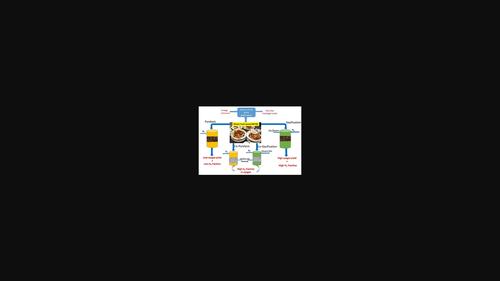Syngas production from thermochemical conversion of mixed food waste: A review
IF 5.4
3区 工程技术
Q2 ENERGY & FUELS
引用次数: 0
Abstract
Lately, the generation of leftover food or cooked food waste has turned out to be a critical issue and its disposal in an environmental friendly way has been a challenge. This food waste is being sent for incineration and landfilling which results in a significant contribution to environmental pollution. Therefore, alternative methods for processing food waste in an environmentally benign way have been explored by many researchers. Thermochemical methods are one of those methods and are found to be promising for not only handling the food waste in an ecological way but also producing renewable energy efficiently in the form of bio‐oil and syngas along with a solid byproduct, that is, biochar. However, the generation of syngas is favored by only two thermochemical processes, fast pyrolysis, and gasification. Some derived processes such as co‐pyrolysis, and co‐gasification can also generate syngas. All these processes for syngas generation differ from each other in terms of process conditions (temperature, reaction agents, and residence time) and syngas quality generated (amount of syngas produced, syngas composition, and heating capacity). Additionally, supercritical water gasification is the latest process developed for processing food waste to generate syngas with much higher hydrogen fraction; however, it produces syngas with less yield and involves high operational costs.

混合食物垃圾热化学转化制合成气的研究进展
最近,剩饭剩菜或熟食垃圾的产生已经成为一个关键问题,以一种环保的方式处理剩饭剩菜已经成为一个挑战。这些食物垃圾被送去焚烧和填埋,这对环境污染造成了重大影响。因此,许多研究人员已经探索了以环境友好的方式处理食物垃圾的替代方法。热化学方法就是其中的一种方法,人们发现它不仅有希望以生态的方式处理食物垃圾,而且还能以生物油和合成气的形式有效地生产可再生能源,同时还能产生固体副产品,即生物炭。然而,合成气的产生只有两种热化学过程,快速热解和气化。一些衍生的过程,如共热解和共气化也可以产生合成气。所有这些合成气生成过程在工艺条件(温度、反应剂和停留时间)和生成的合成气质量(产生的合成气数量、合成气成分和加热能力)方面都有所不同。此外,超临界水气化是最新开发的处理食物垃圾的工艺,可以产生氢含量更高的合成气;然而,它生产的合成气产量较低,运营成本高。
本文章由计算机程序翻译,如有差异,请以英文原文为准。
求助全文
约1分钟内获得全文
求助全文
来源期刊

Wiley Interdisciplinary Reviews-Energy and Environment
ENERGY & FUELS-
CiteScore
11.70
自引率
3.30%
发文量
42
期刊介绍:
Wiley Interdisciplinary Reviews: Energy and Environmentis a new type of review journal covering all aspects of energy technology, security and environmental impact.
Energy is one of the most critical resources for the welfare and prosperity of society. It also causes adverse environmental and societal effects, notably climate change which is the severest global problem in the modern age. Finding satisfactory solutions to the challenges ahead will need a linking of energy technology innovations, security, energy poverty, and environmental and climate impacts. The broad scope of energy issues demands collaboration between different disciplines of science and technology, and strong interaction between engineering, physical and life scientists, economists, sociologists and policy-makers.
 求助内容:
求助内容: 应助结果提醒方式:
应助结果提醒方式:


